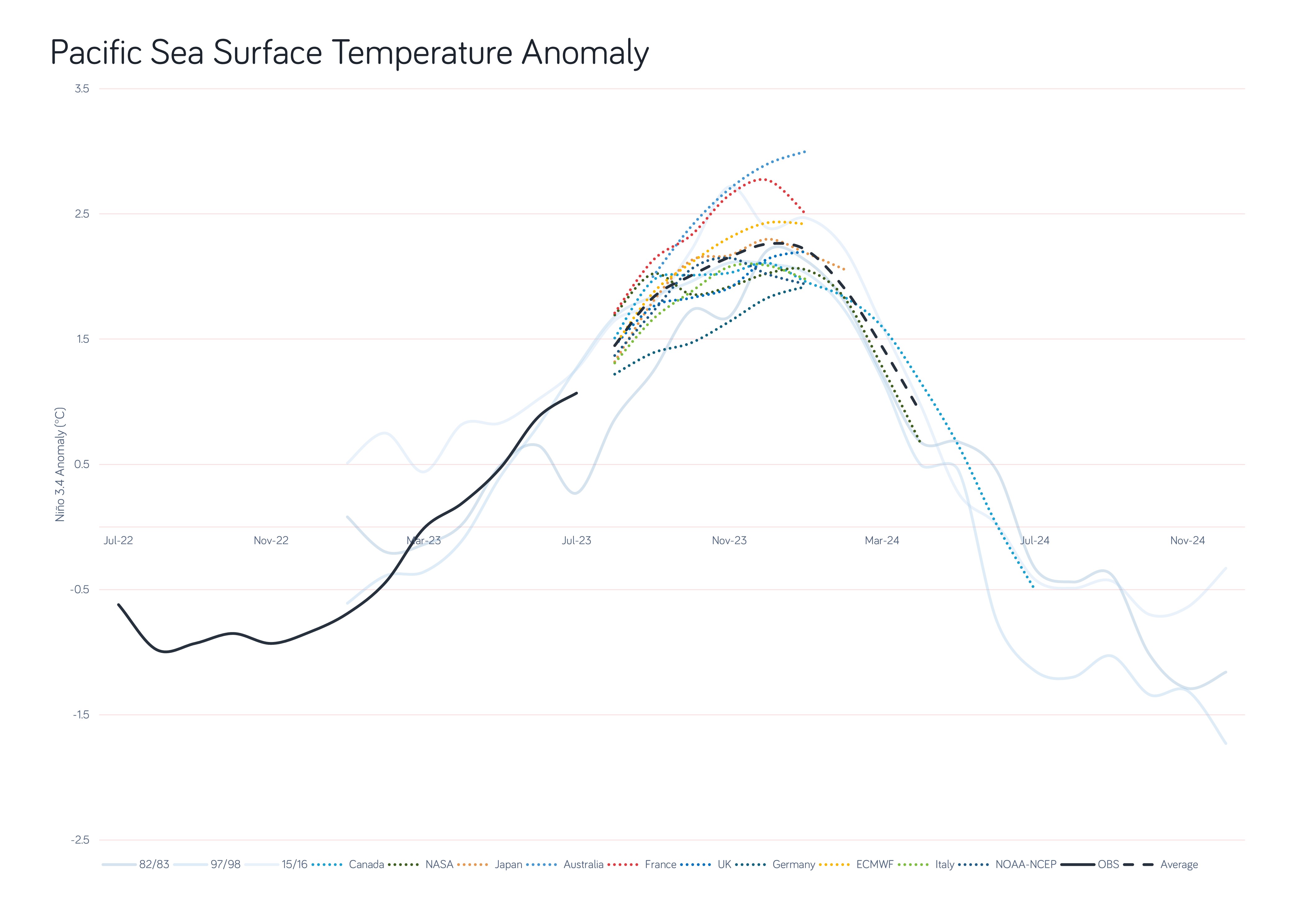August ENSO (El Niño-Southern Oscillation) forecast updates are pointing towards a Very Strong El Niño event later in the year, triggering extreme and potentially destructive weather globally. An average of multiple global models indicates a peak in December at +2.3°C. Significantly, this has increased since the previous update in July, when the average peak was +1.99°C. Mintec is closely tracking these global forecast models as well as the current impacts of adverse weather within the monthly Global Weather News report. The outcome of this forecast is crucial to understand the potential global impacts on commodities over the coming months as the El Niño strengthens.
El Niño events are the warm phases of ENSO, occurring when the sea surface temperature in the Niño 3.4 region of the Pacific Ocean reaches +0.5°C above average. Further increases from the norm indicate stronger El Niño conditions. The inverse is true for La Niña events. When El Niño events arise, the interactions between the ocean and atmosphere create temporary changes to weather systems across most of the globe, resulting in extreme weather conditions which can cause devastating yield losses.
By comparing the current forecasts to the three most recent Very Strong El Niño events, in 1982/83, 1997/98 and 2015/16, correlations can be identified between historical consequences to commodity supply and prices and potential impacts during the 2023/24 season.
One of the most direct effects is the increase in ocean temperatures, especially in the central-eastern Pacific, which has had disastrous impacts on the local fish populations. El Niño events mitigate oceanic upwelling in this region, which reduces the volumes of cooler, nutrient-rich waters nearer the surface. This causes some fish populations to migrate to more suitable waters, either deeper or further north or south. The Peruvian Anchovy particularly suffered losses during these three events.
Additionally, due to the atmospheric changes during historic Very Strong El Niño events, certain regions are likely to receive less rainfall than normal. These regions include northern South America, South Africa, India, Southeast Asia, and Australia. During these years, many high-value crops were adversely affected by a lack of moisture, leading to reduced growth and lower yields. As a result, supplies of palm oil and rice drastically declined. Conversely, rainfall increased in the United States, southern South America, and Eastern Africa. Sometimes this can benefit crops, especially grains and oilseeds, however, excessive rain can also cause over-saturation, rotting, and harvest delays. California is particularly vulnerable to excessive winter rain during strong El Niño years, which can reduce yields of vegetables and the flowering of almonds, as the pollinating bees are less active.
August’s forecast update allows us to examine the possibility of similar outcomes for the 2023/24 El Niño season and offers an insight into the expected scale of extreme weather and potential supply losses. Mintec will continue to provide updates to the ENSO forecast and extreme weather in the Global Weather News report, with particular focus on commodity supply impacts.


.png?width=145&height=54&name=Mintec_Logo_Small_Use_Mono_RGB%20(2).png)

















